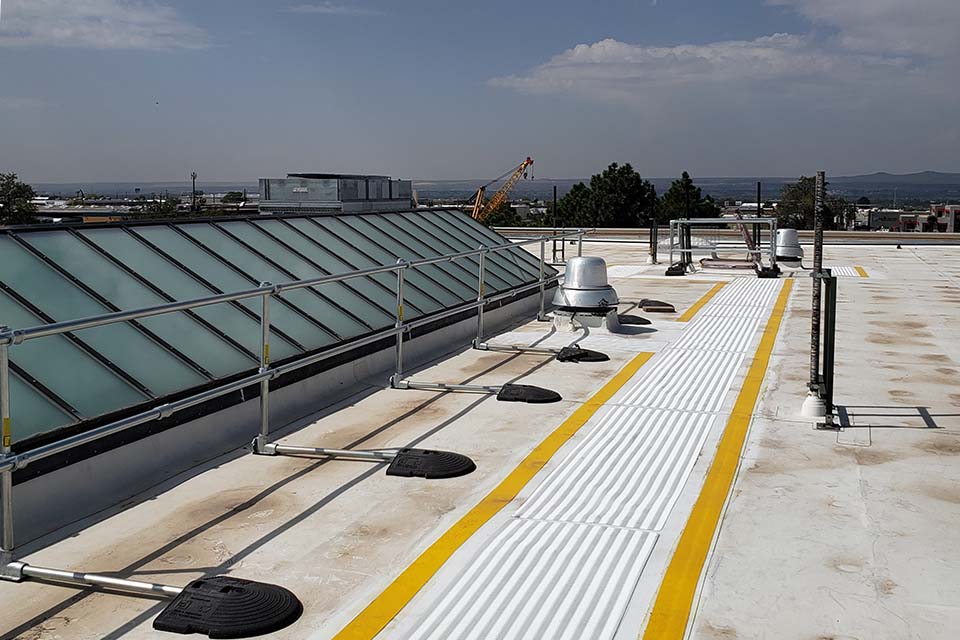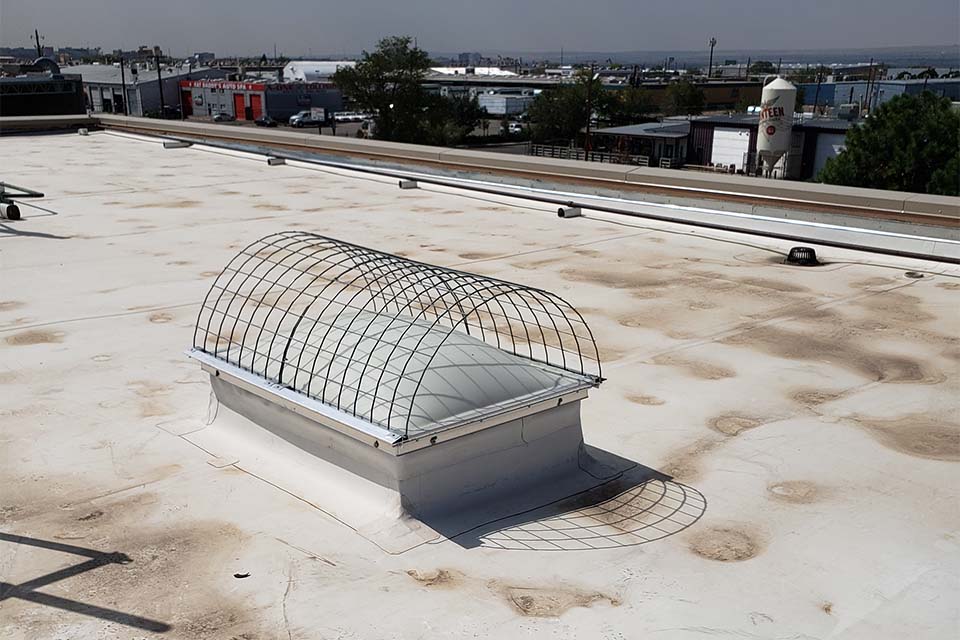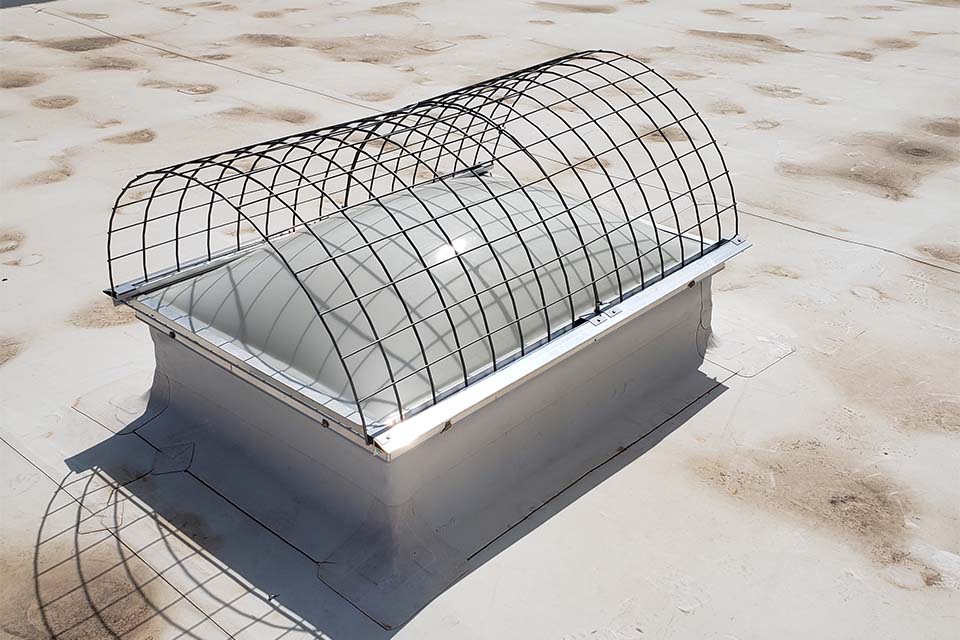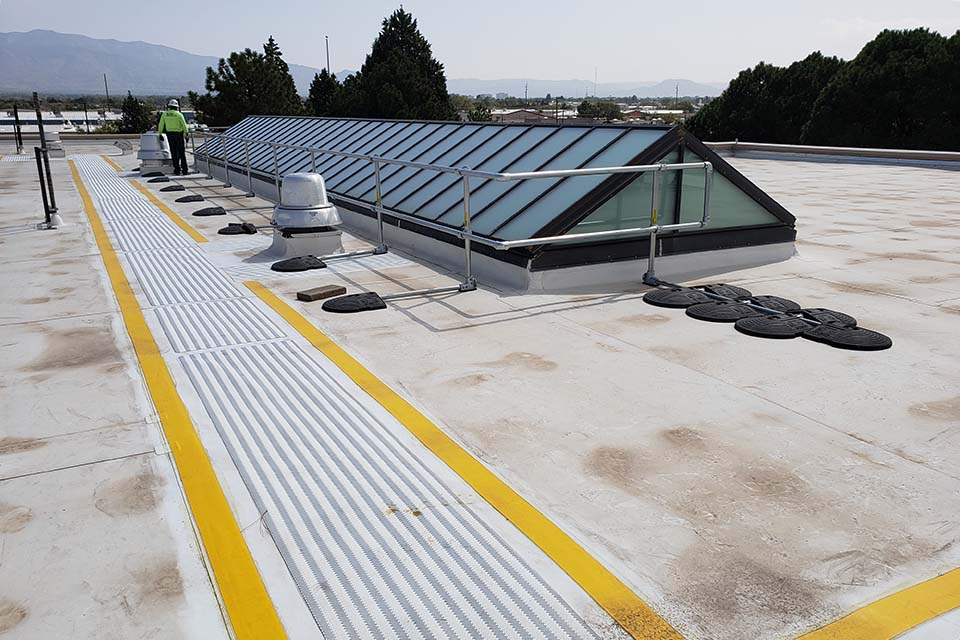Skylight Protection - An Essential Part of Your Safety Plan

PNM is a large utility company in the southwest that pursued OSHA compliance for rooftop fall safety in 2020.
They chose a holistic approach and worked on many safety areas, including roof edge guardrails, metal roof walkways, roof hatchrailing, and skylight protection. This was an important approach because there are many overlooked hazards on a roof that often go unaddressed.
One of the most overlooked hazards on a roof is a skylight. With no visible hole, it’s easy to dismiss when creating a safety plan. PNM knew better and decided that skylight safety was a must for their roof fall protection project.
Why Skylights Should Be Protected

PNM understood that skylights are a serious hazard to their employees. Everything would have to be considered if they truly wanted a roof safety plan that protected their people.
So, they consulted SDV and Simplified Safety to determine the best solution for their skylights. We started with OSHA as a baseline. Here is what OSHA says about skylight safety:
1910.28(b)(3) Holes. The employer must ensure:
1910.28(b)(3)(i)
Each employee is protected from falling through any hole (including skylights) that is 4 feet (1.2 m) or more above a lower level by one or more of the following:
1910.28(b)(3)(i)(A)
Covers;
1910.28(b)(3)(i)(B)
Guardrail systems;
1910.28(b)(3)(i)(C)
Travel restraint systems; or
1910.28(b)(3)(i)(D)
Personal fall arrest systems.
The three options available to PNM were covers (or skylight screens), guardrails, or personal fall protection systems.
Personal fall protection systems are difficult options for skylight safety, especially for arrest. You must make sure that the user cannot come with any range of the skylight if you are in restraint, which could make it very difficult to reach work zones. If you operate in arrest, there is very rarely enough fall clearance to cover someone in the event of a fall. This does include support structures, piping, conduit, and the like if you’re in a warehouse. Also, crashing through a skylight presents additional hazards in the form of sharp objects falling below.
A goal of PNMs was also to reduce the number of penetrations in their roof. So, guardrails and covers were the options they chose.
Choosing Skylight Screens for Safety

Skylight screens provide a wire mesh cover that prevents a user from falling through the skylight to the level below. Old OSHA regulations used to state that screens could not come in contact with the skylight. This language is no longer in the OSHA code.
When choosing a screen, find out if this is the case for that skylight cover. We’ve visited sites where we could push the screen down to the skylight by hand. This may prevent a user from falling to the level below, but sharp edges are still a threat when you’re lying across a broken skylight.
Also, a lot of screens will require you to screw into the skylight or the curb in order to secure the cover. We have these types of screens available, but PNM wanted to avoid unnecessary penetrations. So, we provided a skylight screen that used compression to meet the standards and provide a non-penetrating and safe solution.
Choosing Guardrail for Skylight Safety

Skylight screens are a wonderful option for safety. They take up less space and tend to be more cost-effective. They do have limitations, like if you have a venting skylight or a particularly large one.
In PNMs case, there was one skylight that was entirely too large to provide a skylight cover that would meet the safety requirements that OSHA stipulates. So, we chose a guardrail.
The Kee Guard non-penetrating guardrail was perfect for the size of this skylight. An atrium skylight presents a significant hazard because it is so large. There is so much surface area to fall into. Also, because these types of skylights are made more robustly than normal skylights, it’s easy to see why someone would not think of it as much of a hazard.
PNM understood this and chose to install a guardrail that would protect both their workers from the skylight and their roof from penetration without undue weight.
Wrapping Up
Skylight safety was just a single part of PNMs roof safety plan. They used experts in safety and a strong local contractor (SDV Construction) to complete the project.
If you’re ready to start building out your safety plan or want some expert advice on the plan you already have, then contact one of our experts and we will help you get to that place of safety and satisfaction that PNM now enjoys.